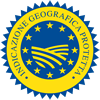Description
The Sedano Bianco di Sperlonga PGI refers to fresh celery belonging to the Dulce variety of the species Apium graveolens L., deriving from the Bianco di Sperlonga ecotype.
Production Area
The production area of Sedano Bianco di Sperlonga PGI is within the territory of the municipalities of Fondi and Sperlonga, in the Province of Latina, in the Lazio region.
Production Method
Sedano Bianco di Sperlonga PGI derives from the germination of seeds from the production area obtained through phenotypic selection, which are planted from July onwards. The seedlings are transplanted when they are 10-15 cm high and watered either by sprinklers or via micro-fertigation; they are fertilised according to the crop rotation sequences of the entire agricultural year. As growth is slow and not competitive enough to fight off weeds, it is very important to monitor the first 40-50 days to protect the plants’ health as much as possible. The weeds are eliminated with eco-compatible techniques such as solarisation or hoeing. The defence against parasites must be carried out with integrated pest management techniques, in order to minimise or remove pesticide residues on the celery. Compared to the primary commercial cultivars, Sedano Bianco di Sperlonga PGI is less subject to pre-flowering. Harvesting is carried out between February and June by cutting the plant under the neck. The freshly harvested celery is put carefully in special containers, so as to avoid damage to the product; the containers must then be stored away from direct sunlight.
Appearance and Flavour
Sedano Bianco di Sperlonga PGI is pale green in colour, with white or whitish ribbing; it is not particularly fibrous. It has a sweet flavour and is slightly aromatic.
History
Celery was already known and appreciated for its therapeutic properties in 1000 BC. Homer mentioned celery as a medicinal herb in The Odyssey. In the Middle Ages, Abbess Hildegard of Bingen considered celery a remedy for all ills. The first evidence of the plant being used as food dates back to the 17th century, in a French document from 1623. However, information about the Bianco di Sperlonga variety is far more recent. In fact, Sedano Bianco di Sperlonga was brought to the Fondi and Sperlonga areas in the 1960s. Its cultivation immediately proved to be a valid way of using the land in the Pantani area, which is located between the Fondi, S. Puoto and Lungo lakes and the Tyrrhenian Sea.
Gastronomy
Sedano Bianco di Sperlonga PGI is characterised by its long-lasting physical and aromatic properties, although it is still best kept in a cool place away from direct sunlight, being careful not to break the stalks and fibres. It is perfect for eating raw, in crudité or combined with bluefish, but it can also be used in various delicious starters, first courses and main courses, as well as in ice-cream.
Marketing
The product is marketed as Sedano Bianco di Sperlonga PGI. It is available from February to June and sold in packets containing either one row of 4-5 celeries, with a maximum weight of 5 kg, or two rows of 8-10 celeries, with a maximum weight of 10 kg. It is also available in packets containing 1-3 celeries.
Distinctive Features
The specificity of Sedano Bianco di Sperlonga PGI is linked to the area’s pedoclimatic characteristics and the local farmers’ historical specialisation, finding a way to adapt low-impact environmental techniques and take advantage of marshlands, so as to preserve the Bianco di Sperlonga ecotype.

















